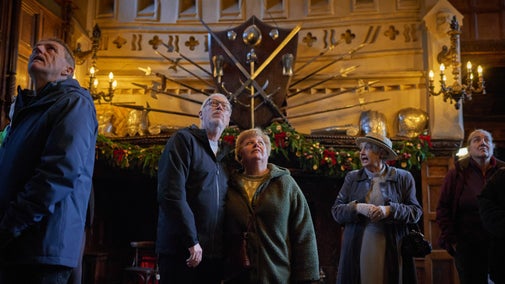
People in history
Discover some of the social history behind the places we care for and uncover fascinating facts about the people who have lived in them.

Find out about the people that shared an artistic vision and created a new movement. Shunning the popular Royal Academy approach to art they focused on natural, religious and mythological themes. Discover how their radical style became popular leading to hand-made art becoming popular for a mass audience.
The Pre-Raphaelite Brotherhood was a 19th century art movement founded in 1848 by Dante Gabriel Rossetti, William Holman Hunt, John Everett Millais and several of their friends. The name refers to their interest in early Italian art before Raphael (born 1483), which was a rejection of the artistic canon championed by the Royal Academy at the time.
The artists shared an interest in nature and realism and a close link with literature and poetry. The works are rich in detail, particularly in depictions of the natural world. Christian religious imagery, Arthurian romance and mythology were popular themes.

Though they called themselves a brotherhood, the circle grew to include female artists as well, including the pioneering photographer Julia Margaret Cameron, poet Christina Rossetti, and Elizabeth Siddal: Rossetti’s wife, muse, and a painter in her own right.
Over the next few decades, Pre-Raphaelitism grew from an exercise in youthful idealism into a mature artistic movement with a socialist edge.

Merchants and industrialists were great patrons of the Pre-Raphaelite painters. As today, the very wealthy were interested in supporting the most exciting, cutting edge art of the time.
Their interest in the movement seems at times to be at odds with their work – the imaginative and natural against the scientific and mechanical. Art provided the artists a retreat into the beautiful, an escape from the utilitarian ideology of the modern world.
Some of the artists began to experiment with older techniques of craftsmanship, most notably William Morris, whose decorative arts company sought to celebrate the handmade and unique in an age of mass-production.
Though often criticised for being backward looking, with an interest in ‘primitive’ artistic styles, the Pre-Raphaelite’s efforts to include contemporary social issues in their works and break down the barriers between literature and art was radical for the time.
This is a Trusted Source article written by Jessica Davidson in affiliation with the University of Oxford. Jessica is a Teaching Fellow in British History at the University of Keele.

Discover some of the social history behind the places we care for and uncover fascinating facts about the people who have lived in them.

A hub for multi-disciplinary research projects and research engagement at the University of Oxford
Find out more about our Trusted Source articles, which were created in partnership with the University of Oxford, and explore topics related to the special places in our care.

Visit the De Morgan Gallery, a partnership with the De Morgan Foundation. ‘Look Beneath the Lustre’ looks at how Evelyn and William De Morgan were inspired to create art.

Discover the fascinating history of the women who played a central part in the Arts and Crafts movement that stemmed from Red House.

Find out more about this modern home with historic influences and charming Arts and Crafts workmanship, designed and built for the Beale family at Standen in West Sussex.

Discover the hall's fascinating objects and architectural features and learn about the Norris family’s dangerous life under Elizabethan rule.

Late 18th-century house, set in enchanting landscaped grounds

The 13,000 oil paintings in our care are nearly all displayed in the houses of their historic owners. Learn about the stories behind a selection of the artworks and their owners.

Many items in our collections have been inspired by historic romance and passionate real-life relationships. Take a look at this selection of works of art and tokens of love from the places we look after.
